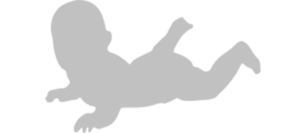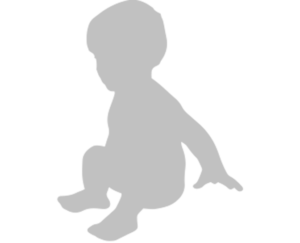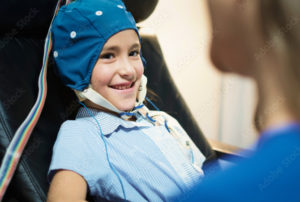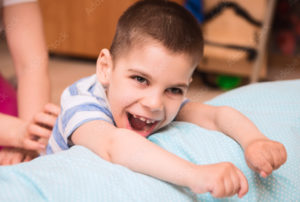Early signs and symptoms of cerebral palsy
Cerebral palsy affects children in numerous physical and neurological ways. The condition’s severity and the extent of associated movement problems varies depending on the type of brain damage a child suffers. In turn, there are a variety of symptoms and signs of cerebral palsy.
Damage to the developing brain that causes cerebral palsy can affect a child’s motor function, posture, and balance, as well as cognitive development.
Many cases of cerebral palsy are not diagnosed until toddlerhood since the signs and symptoms can be difficult to identify. Keeping an eye out for certain cerebral palsy symptoms can help your child get an early diagnosis and proper treatment.
Cerebral palsy symptoms in babies
 Some cerebral palsy newborn symptoms caused by brain damage during childbirth may go unnoticed in infants. It may not be apparent, but there may be an abnormality in brain development.
Some cerebral palsy newborn symptoms caused by brain damage during childbirth may go unnoticed in infants. It may not be apparent, but there may be an abnormality in brain development.
Signs of cerebral palsy in infants may include:
- Abnormal muscle tone
- Crossed or stiffened legs when being picked up
- Delays in sitting, crawling, rolling over, and walking
- Difficulty grasping objects or clapping their hands
- Excessive drooling
- Inability to lift their own head
- Overextended back and/or neck when being picked up
- Stiffness of joints and/or muscles (spasticity)
Cerebral palsy symptoms in toddlers
 Children are often diagnosed with cerebral palsy during toddlerhood since their symptoms become more recognizable due to developmental delays.
Children are often diagnosed with cerebral palsy during toddlerhood since their symptoms become more recognizable due to developmental delays.
Signs of cerebral palsy in toddlers may include:
- Abnormal posture
- Crawling in a lopsided manner
- Difficulty with fine motor skills such as eating, brushing teeth, or coloring
- Hearing loss or blindness
- Hopping on their knees when trying to walk
- Inability to stand
- Uncontrollable muscle movement
- Scooting around on their buttocks
- Speech problems
- Stiff muscles, joints, or tendons
Despite these daily challenges, there are many treatment and support options available to help children with cerebral palsy live independent and healthy lives.
Physical cerebral palsy symptoms by type
When the motor control centers of the brain are damaged, it can result in several types of movement issues. These limitations and their corresponding symptoms vary based on the severity and location of the brain injury, as well as the child’s specific type of cerebral palsy.
According to a study cited from the Centers for Disease Control and Prevention (CDC), 41% of children with cerebral palsy had limited ability to crawl, walk, run, or play. About 31% needed to use special equipment such as walkers or wheelchairs.
Spastic cerebral palsy symptoms
Spastic cerebral palsy is known for jerky movements and tight muscles caused by damage to the motor cortex and/or pyramidal tracts. This type of cerebral palsy can cause movement disorders including quadriplegia, diplegia, and hemiplegia.
Common symptoms of spastic cerebral palsy include:
- Abnormal walking
- Awkward reflexes
- Muscle stiffness of one side of the body
- Permanently tightened muscles or joints
Ataxic cerebral palsy symptoms
Ataxic cerebral palsy is characterized by poor balance and coordination caused by damage to the brain’s cerebellum.
Common symptoms of ataxic cerebral palsy include:
- Coordination issues
- Depth perception problems
- Difficulty with speech
- Shakiness and tremors
- Spreading feet apart when walking
Athetoid/Dyskinetic cerebral palsy symptoms
Athetoid cerebral palsy is caused by abnormal involuntary movement due to damage to the basal ganglia and/or cerebellum.
Common symptoms of athetoid cerebral palsy include:
- Feeding issues
- Floppy limbs
- Problems with posture
- Stiff or rigid body
Hypotonic cerebral palsy symptoms
Hypotonic cerebral palsy involves damage to the cerebellum and is characterized by loose and floppy muscles.
Common symptoms of hypotonic cerebral palsy include:
- Flexible joints and ligaments
- Floppy or loose muscles
- Lack of head control
- Poor balance and stability
Mixed cerebral palsy symptoms
Mixed cerebral palsy occurs when more than one part of the brain’s motor control center is damaged. This can result in a variety of signs and symptoms of more than one type of cerebral palsy.
The most common combination of cerebral palsy types are spastic/athetoid and spastic/ataxic.
Co-occurring neurological conditions of cerebral palsy
 Although the primary symptoms of cerebral palsy involve a lack of control of motor function, there are several neurological conditions that can occur alongside cerebral palsy.
Although the primary symptoms of cerebral palsy involve a lack of control of motor function, there are several neurological conditions that can occur alongside cerebral palsy.
Damage to the areas of the brain responsible for movement can also regulate other bodily functions. Since symptoms are caused by the location of brain damage, not every child will experience the same neurological symptoms.
Common neurological symptoms of cerebral palsy include:
- Autism
- Attention deficit hyperactivity disorder (ADHD)
- Behavioral problems
- Epilepsy (seizure disorder)
- Intellectual disabilities
- Learning disabilities
- Speech and language issues (dysarthria)
- Sensory impairments
- Visual/hearing impairment
About 42% of the children identified with cerebral palsy by the Autism and Developmental Disabilities Monitoring (ADDM) Network in 2010 had co-occurring epilepsy.
It can be difficult to assess and diagnose these neurological cerebral palsy conditions at a young age, especially if a child is unable to speak. Tests to diagnose these conditions usually require communication and hand control.
That said, it is important to monitor your child’s development and behavior. Contact a physician if you believe your child is showing any neurological symptoms associated with cerebral palsy to get prompt diagnosis and treatment.
Secondary signs and symptoms of cerebral palsy
The inability to control motor function can lead to many secondary cerebral palsy symptoms. Children may struggle to independently complete daily activities such as eating.
Children with severe cases of cerebral palsy are more likely to experience secondary symptoms than children with mild cases of the condition.
Secondary symptoms commonly associated with cerebral palsy include:
- Airway obstruction
- Constipation
- Contractures
- Frequent bone fractures
- Gastroesophageal reflux
- Hernias
- Incontinence
- Sleep disorders
- Stunted growth
- Tooth and gum disease
These conditions may make it difficult for your child to complete daily tasks, get proper nutrition, and live an independent and pain-free life. Consulting with a cerebral palsy specialist is the best way to get your child proper treatment to provide them with a better quality of life.
Learn more about cerebral palsy
 Children can experience many different physical and neurological cerebral palsy symptoms depending on the type and location of their brain injury.
Children can experience many different physical and neurological cerebral palsy symptoms depending on the type and location of their brain injury.
It is important to monitor your child’s development and contact a doctor if you believe your child is missing any developmental milestones. Proper health care can help manage your child’s cerebral palsy symptoms and allow them to live a healthy, independent life.
Download our free Cerebral Palsy Guide to get in-depth information about cerebral palsy signs for parents and caregivers.
If you believe your child is showing symptoms of cerebral palsy, our nurses are standing by to help you. Call (855) 220-1101 to speak with one of our registered nurses today.
